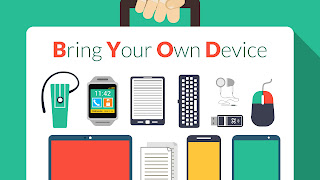Twitter Feed
Getting Your Network in the Cloud
Join us with Virtual Newsmakers on Saturday, May 28th at 11:00am for a YouTube Livestream on cloud computing. Virtual Newsmakers is a webcast show featuring virtual newsmakers, who are bridging…
Enterprise Networking in a Cloud World
Enterprises must rethink network management in the cloud computing world. This new reality is driven by the rise of software defined networking, the virtualization of everything and a business imperative…
The Game of Clouds 2016
In the mythical, medieval land of AWS, a civil war brews between the several noble Cloud Services over rulership. Meanwhile, across the sea, the former controlling dynasty, Traditional IT, attempts…
10 Ways to Flash Forward
Not to long ago I was honored to be included as a storage expert in the Dell ebook, “10 Ways to Flash Forward: Future-Ready Storage Insights from the Experts.” This…
The Future of Storage
A few weeks ago I had the pleasure of doing a Blab on advanced storage with Daniel Newman and Eric Vanderburg. We covered some pretty interesting points on enterprise storage…
DevOps and Hybrid Infrastructure Synergy
(This post first appeared in IBM’s Point B and Beyond) The definition of DevOps emphasizes collaboration and communication between software developers and other IT professionals while automating the software delivery…
Are electronic medical records worth it?
The use of Electronic Medical Records (EMR) by medical professionals has increased dramatically. According to HealthIT.gov, 2015 statistics show that 56 percent of all U.S. office-based physicians (MD/DO) have demonstrated meaningful use…
Finding a Framework for Hybrid Cloud Risk Management
(Sponsored by IBM. Originally published on Point B and Beyond) Hybrid cloud is rapidly becoming essential to today’s information technology processes. This is why hybrid cloud risk management has become…
Cancer, cloud and privacy shield
(Originally published in Dell PowerMore) For more than 10 years, the rapid rise of cloud computing has enabled an even more rapid application of cloud to genomic medicine. In fact,…
Hybrid Cloud Versus Hybrid IT: What’s the Hype?
(Originally posted on Point B and Beyond) Once again, the boardroom is in a bitter battle over what edict its members will now levy on their hapless IT organization. On…
- Increased employee mobility (63%), satisfaction (56%) and productivity (55%) dominate as the top drivers of BYOD. These employee related drivers are considered more important than reduced costs (47%).
- Security (39%) and employee privacy (12%) are the biggest inhibitors of BYOD adoption.
- 20% of surveyed organizations have suffered a mobile security breach, primarily driven by malware and malicious WiFi.
- Security threats to BYOD impose heavy burdens on organizations’ IT resources (35%) and help desk workloads (27%).
- Despite increasing mobile security threats, data breaches and new regulations, only 30% of organizations are increasing security budgets for BYOD in the next 12 months and 37% have no plans to change their security budgets.
- 72% – Data leakage/loss
- 56% – Unauthorized access to company data and systems
- 54% – Downloading of unsafe apps or content
- 52% – Malware
- 50% – Lost or stolen devices
- 49% – Vulnerability exploitation
- 48% – Lack of control on endpoint security
- 39% – Infrequent software updates
- 38% – Compliance
1. Create your policy before procuring technology: To effectively use mobile device management (MDM) technology for employee owned devices Policy must precede technology. Also note that these policies will have broad corporate-wide implications for IT, HR, legal, and security.
- Mobile device management
- Application security assessments
- Application testing services
- Application source code security assessments; and
- Embedded device security.
This post was brought to you by IBM Global Technology Services. For more content like this, visit ITBizAdvisor.com.
( Thank you. If you enjoyed this article, get free updates by email or RSS – © Copyright Kevin L. Jackson 2017)
Cloud Computing
- CPUcoin Expands CPU/GPU Power Sharing with Cudo Ventures Enterprise Network Partnership
- CPUcoin Expands CPU/GPU Power Sharing with Cudo Ventures Enterprise Network Partnership
- Route1 Announces Q2 2019 Financial Results
- CPUcoin Expands CPU/GPU Power Sharing with Cudo Ventures Enterprise Network Partnership
- ChannelAdvisor to Present at the D.A. Davidson 18th Annual Technology Conference
Cybersecurity
- Route1 Announces Q2 2019 Financial Results
- FIRST US BANCSHARES, INC. DECLARES CASH DIVIDEND
- Business Continuity Management Planning Solution Market is Expected to Grow ~ US$ 1.6 Bn by the end of 2029 - PMR
- Atos delivers Quantum-Learning-as-a-Service to Xofia to enable artificial intelligence solutions
- New Ares IoT Botnet discovered on Android OS based Set-Top Boxes


